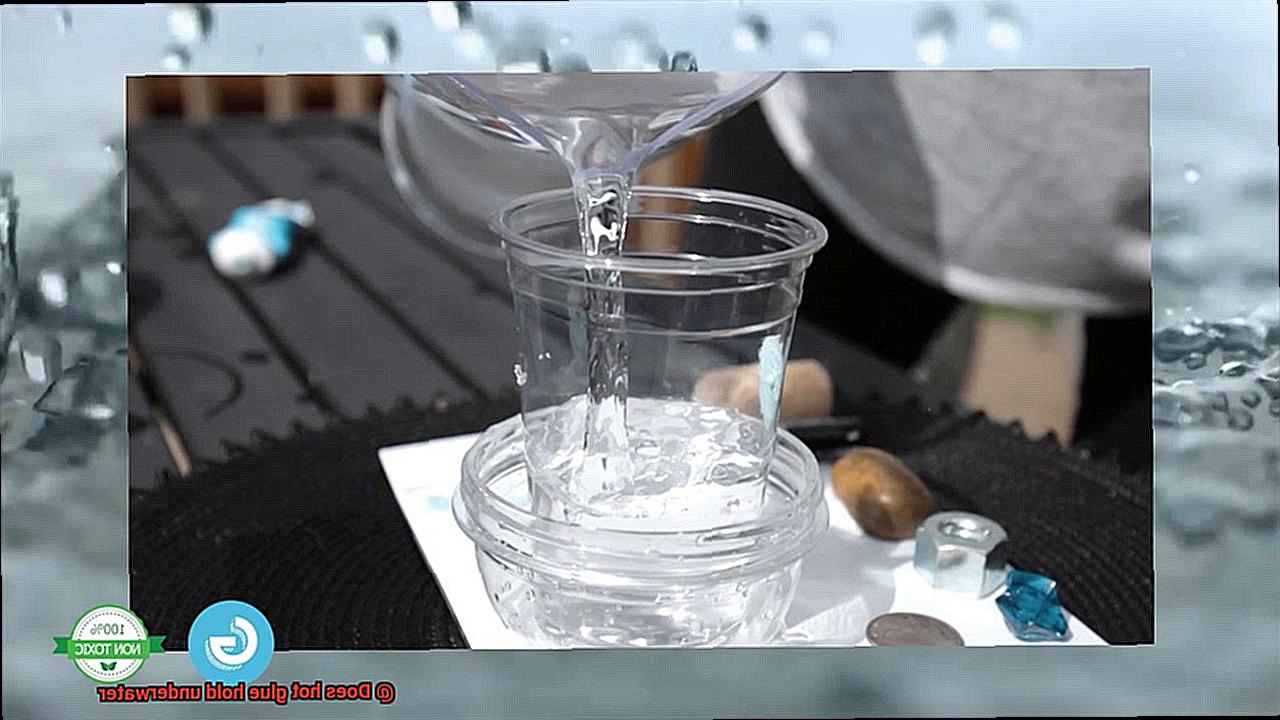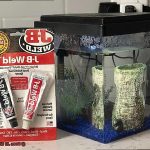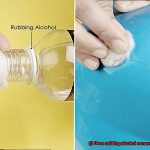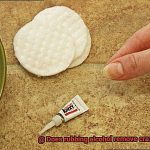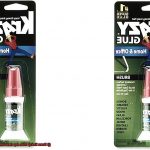Have you ever found yourself in a sticky situation, wondering if hot glue can hold objects together underwater? Maybe you’re a crafty individual with a DIY project that involves attaching decorations to the bottom of a pool or aquarium. Or perhaps you need to repair something that’s constantly exposed to water. Whatever the reason, the answer isn’t as straightforward as you might think.
As an adhesive expert with years of experience, I can tell you that traditional hot glue has some waterproof capabilities, but it’s not designed for prolonged exposure to water. If you try using regular hot glue for an underwater project, don’t be surprised if it doesn’t hold up well.
But don’t lose hope just yet. There are specific types of hot glue formulated for underwater use. These adhesives create strong and long-lasting bonds even when submerged in water. They’re often used by aquarium enthusiasts to attach coral fragments or other decorations inside their tanks.
In this blog post, we’ll dive deeper into whether hot glue holds underwater. We’ll explore different types of hot glue available, their waterproof capabilities, and when you might need to use them. So whether you’re a DIY enthusiast or a professional hobbyist, keep reading to learn everything you need to know about using hot glue underwater.
What is Hot Glue?
Contents
- 1 What is Hot Glue?
- 2 Does Hot Glue Hold Underwater?
- 3 Advantages and Disadvantages of Hot Glue
- 4 Alternatives to Using Hot Glue Underwater
- 5 Different Types of Waterproof Adhesives Available
- 6 Tips for Using Waterproof Adhesives
- 7 How to Test the Strength of the Bond Created by a Waterproof Adhesive
- 8 Conclusion
Hot glue, also known as hot melt adhesive, is a magical adhesive that has revolutionized crafting, DIY projects, and repairs. This thermoplastic adhesive is made by melting a combination of resin and wax together to form a liquid adhesive that quickly cools and hardens upon application. The result is an incredibly strong bond between two surfaces being joined, making it an ideal choice for projects that require quick and easy bonding.
Hot glue comes in various forms, including sticks and pellets, which can be loaded into a hot glue gun. These guns heat the glue to a melting point so that it can be applied to a wide range of materials such as paper, fabric, plastic, and wood. With its fast-drying time, hot glue is the go-to adhesive for many crafters and DIY enthusiasts.
However, one important consideration when using hot glue is its limited effectiveness underwater. Hot glue is not designed to be waterproof and can quickly lose its adhesive properties when exposed to water. This can cause the glue to become brittle and break apart, leading to a weakened bond or complete failure.
To avoid these problems, there are some types of hot glue that are marketed as waterproof or water-resistant. These specially formulated glues can provide stronger adhesion when used underwater if used correctly. It is essential to read the label carefully and understand the limitations of the product before use in an underwater application. In general, it is best to opt for a waterproof adhesive specifically designed for underwater use such as epoxy, silicone, or polyurethane.
Does Hot Glue Hold Underwater?
Hot glue is a popular adhesive that has taken the crafting world by storm. Its versatility, ease of use, and quick-drying properties make it a go-to for all sorts of projects and repairs. However, it’s not always the best option when it comes to underwater use.
To understand why hot glue may not be the best choice for aquatic projects, we need to consider its properties and how they interact with water. Hot glue is made up of thermoplastic polymers that melt when heated and solidify when cooled. This process creates a bond with the surface to which it is applied. However, water can have a significant impact on this bond by penetrating the porous structure of the glue and causing it to lose its integrity.
But that’s not all. The heat from the glue gun can also cause water in contact with the glue to evaporate rapidly, leading to air pockets that can further weaken the bond. As a result, while hot glue may hold up temporarily underwater, it is not recommended for long-term or permanent use in aquatic environments.
Fortunately, there are other options out there for underwater projects. Marine epoxy and silicone sealant are two excellent choices specifically designed for use in water. These adhesives are formulated to withstand the unique challenges of aquatic environments, providing a strong and durable bond that can stand up to the elements.
Advantages and Disadvantages of Hot Glue
Then, you’ve probably heard of hot glue as an adhesive option. Hot glue is a versatile adhesive that can be used for various projects, from fixing broken glasses to creating intricate crafts. However, like any other type of adhesive, hot glue has both advantages and disadvantages that you need to consider before using it.
Let’s start with the good news – the advantages of using hot glue in your project.
- Fast-drying time: One of the most significant advantages of hot glue is its fast-drying time. It solidifies quickly when cooled, making it ideal for projects that require immediate bonding.
- Strong bond: When applied correctly, hot glue provides a strong and durable bond that can withstand pressure and tension. This makes it perfect for use in heavy-duty projects where a strong and secure hold is required.
- Versatile: Hot glue can be used on a wide range of surfaces, including wood, metal, fabric, and plastic. This versatility makes it convenient to use in different projects without worrying about the materials’ compatibility.
- Filling gaps: Hot glue can fill gaps and cracks in materials, creating a seamless finish that looks aesthetically pleasing. This makes it an excellent option for creating smooth and flawless crafts.
Now, let’s talk about the disadvantages of using hot glue.
- Temperature sensitivity: One of the main disadvantages of hot glue is its sensitivity to temperature changes. It can become brittle when exposed to extreme temperatures, making it unsuitable for outdoor projects or items that will be exposed to heat or cold.
- Limited water resistance: Although hot glue can withstand some exposure to water, it is not recommended for projects that will be constantly submerged or exposed to moisture. This limits its use in projects like aquariums or items that will be frequently washed.
- UV light degradation: Hot glue might degrade over time when exposed to UV light, causing it to lose its adhesive properties. This means that it may not be suitable for items that will be exposed to sunlight for extended periods.
Alternatives to Using Hot Glue Underwater
Imagine being in the middle of an underwater project, trying to bond two surfaces together, only to realize that hot glue won’t do the trick. Fear not, for there are alternatives to hot glue that can provide a stronger and more reliable hold in water environments.
One option is epoxy. This two-part adhesive creates a powerful bond when mixed, making it an excellent choice for underwater bonding. Epoxy is waterproof and resistant to chemicals, ensuring durability. Plus, it dries clear, which is perfect for projects where appearance matters.
Another alternative is marine-grade silicone adhesive, designed specifically for marine environments. It can bond a variety of materials underwater and is waterproof and resistant to UV rays, ensuring longevity even when exposed to sunlight.
For those who prefer natural solutions, beeswax can also be used for underwater bonding. Melted beeswax creates a strong bond that is waterproof, non-toxic, and safe for aquatic life.
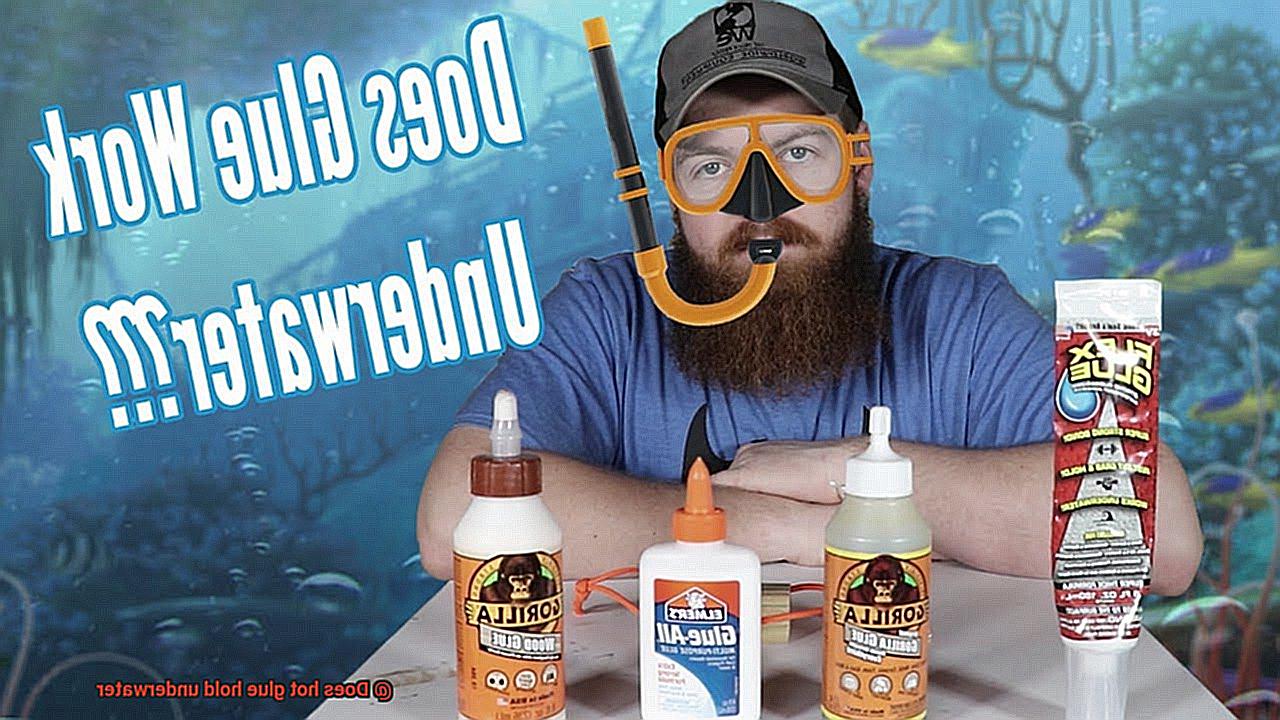
Different Types of Waterproof Adhesives Available
When it comes to underwater projects, hot glue may not be the best adhesive option. But fear not, there are several types of waterproof adhesives available on the market. Let’s explore the different types of waterproof adhesives available for use in underwater applications.
Epoxy Resin
Epoxy resin is a two-part adhesive that requires mixing before application. It’s a popular choice for underwater repairs due to its excellent bonding strength and resistance to water and chemicals. It’s ideal for repairing boats, sealing leaks in aquariums, and fixing other underwater structures made of metal, plastic, or wood.
Silicone Adhesive
Silicone adhesive is a flexible and durable adhesive that can withstand exposure to water and extreme temperatures. It’s commonly used for sealing gaps or joints in wet environments such as swimming pools and bathrooms. It’s an excellent choice for underwater projects where flexibility is required.
Water-based Adhesives
For those looking for eco-friendly options, water-based adhesives are made from natural materials and are biodegradable. They’re perfect for environmental projects like repairing underwater coral reefs.
Cyanoacrylate Glue
Cyanoacrylate glue, also known as super glue, is a quick-drying adhesive that forms a strong bond. It’s ideal for small repairs in underwater environments but may not be suitable for larger repairs or certain materials.
Polyurethane Adhesives
Polyurethane adhesives are flexible and can be used on a variety of surfaces, including metal, plastic, and wood. They’re resistant to water and chemicals, making them a great choice for underwater repairs.
Marine-grade Sealants
Marine-grade sealants are specifically designed for use in saltwater environments and can be used to seal leaks in boats or other underwater structures.
Tips for Using Waterproof Adhesives
When it comes to using waterproof adhesives, there are specific tips to keep in mind to ensure that your project is a success. Choosing the right adhesive is crucial. Not all waterproof adhesives are created equal, so it’s important to read the label carefully and select a product that is designed for the materials you are working with. Epoxy, cyanoacrylate glue (super glue), and silicone are all good options for underwater bonding.
Once you have the right adhesive, it’s essential to prepare the surfaces properly before applying it. This means cleaning and drying the surfaces thoroughly to remove any dirt, grease, or moisture that could weaken the bond. Additionally, be aware of temperature and humidity conditions as most adhesives have a recommended temperature range for optimal bonding. High humidity can affect the curing process of some adhesives, so take this into account when working on your project.
Using the correct amount of adhesive is also crucial. Too much adhesive can create a mess and may not bond properly, while too little adhesive won’t provide a strong enough bond. Follow the manufacturer’s instructions carefully and use just enough adhesive to create a secure bond.
Allowing sufficient cure time is another important step in ensuring a successful bond. This can vary depending on the product and conditions, so be sure to read the label for specific recommendations. It’s important to note that some adhesives may require several hours or even overnight curing time before being exposed to water.
Finally, additional reinforcement may be necessary for larger or heavier items. Consider using mechanical fasteners such as screws or bolts in addition to adhesives to ensure a strong bond while the adhesive cures.
How to Test the Strength of the Bond Created by a Waterproof Adhesive
Creating a strong bond underwater requires the use of a waterproof adhesive that is specifically designed for aquatic environments. However, even the best adhesive can fail if it hasn’t been tested properly. Here are five sub-sections to consider when testing the strength of the bond created by a waterproof adhesive:
Preparing the Surfaces
Before applying the adhesive, ensure that the surfaces being bonded are clean and dry. Any dirt, oil, or moisture can weaken the bond and affect the results of the test. Use a solvent to remove any oil or grease from the surfaces and allow them to dry completely.
Tension or Pull Test
A tension or pull test is one of the most common methods used to test the strength of the bond created by a waterproof adhesive. This involves applying force to the bond in order to measure how much weight or pressure it can withstand before breaking. Hydraulic or mechanical testing machines are often used for this type of testing.
Lap Shear Test
Another approach is the lap shear test, which involves bonding two pieces of material together with the adhesive and then subjecting them to a controlled shear force to see how well they hold up. This method can provide valuable information about the adhesive’s ability to resist sliding or slipping.
Peel Test
The peel test involves bonding two pieces of material together with the adhesive and pulling them apart at a controlled rate to measure the force required to break the bond. This approach can provide valuable information about the adhesive’s ability to withstand stress in different directions.
Environmental Factors
It’s important to consider environmental factors that can affect the strength of the bond created by a waterproof adhesive. Temperature, humidity, exposure to different chemicals or substances can all affect its effectiveness. It may be necessary to perform multiple tests under different conditions in order to get an accurate measure of its strength.
Conclusion
In summary, hot glue may be a go-to adhesive for many crafters and DIY enthusiasts, but it’s not the best option for underwater projects. Water can seep into the porous structure of hot glue, causing it to lose its strength and become brittle. However, don’t despair. There are specially formulated types of hot glue that are designed for underwater use, as well as other waterproof adhesives on the market that offer superior bonding in aquatic environments.
When selecting a waterproof adhesive, it’s crucial to read the label carefully and choose a product that is suitable for the materials you’re working with. Proper surface preparation, applying the correct amount of adhesive, allowing enough curing time, and environmental considerations are all essential steps in achieving a successful bond.
While hot glue has its benefits such as fast-drying time and versatility in bonding various materials, it also has its limitations. It’s sensitive to temperature changes and has limited water resistance. Therefore, before deciding which adhesive to use for your project, weigh up the pros and cons carefully.
Ultimately, understanding the properties of different adhesives and their suitability for specific applications is vital for creating strong bonds in dry or wet environments.

